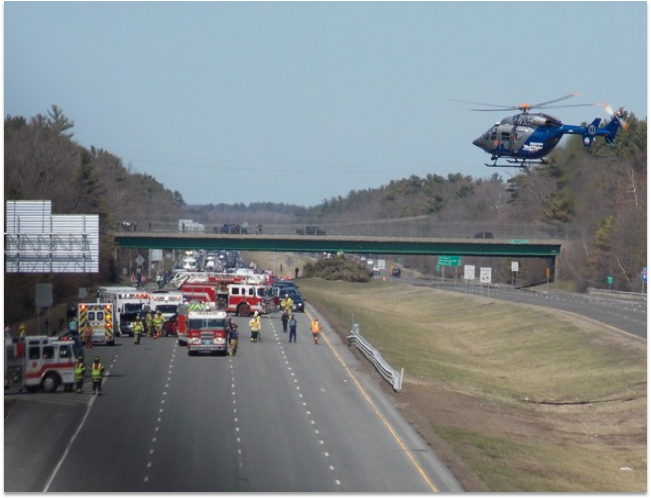3 Ways Highway Safety & EMS Can Work Together

The National Roadway Safety Strategy (NRSS), released in early 2022 by the DOT, continues to increase awareness about the role 911 and EMS play in saving lives and treating injuries from motor vehicle crashes.
In a nutshell, the NRSS uses a five-pronged Safe System Approach to help move toward zero deaths on our country’s roadways. Beyond making vehicles, roads, people and speeds safer, the approach identifies the post-crash care that EMS and 911 provide as key to saving lives.
Highway safety and transportation professionals are hearing a lot more from NHTSA and the DOT about the impact 911 and EMS system performance—and improvement—have on saving lives.
“The Office of EMS [OEMS] is bringing more attention to the needs of EMS agencies so that highway safety professionals understand the impact they can have when we work together to achieve our shared goal of saving lives and reducing disability,” explains Gam Wijetunge, Director of NHTSA’s OEMS.
Here are a few ways EMS, 911 and highway safety can start collaborating today to save the lives of crash victims, while also creating a safe working environment for EMS clinicians:
Learn about new local grants to fund improvements to post-crash care.
The Safe Streets and Roads for All (SS4A) grant program funds regional, local and tribal initiatives through grants to prevent roadway deaths and serious injuries and supports the NRSS, including post-crash care.
The National EMS Advisory Council (NEMSAC) recently issued recommendations to NHTSA on how to improve post-crash care. These highlighted the importance of activities that improve patient outcomes such as emergency medical dispatch (EMD), timely on-scene care using the National Association of State Emergency Medical Services Officials (NASEMSO) National Model EMS Clinical Guidelines, transportation to a trauma center based on the American College of Surgeons (ACS) national guidelines for the field triage of injured patients, and continuous quality improvement.
Share EMS Data with highway safety.
While some highway safety officers already work with states to support the collection of data through the National EMS Information System (NEMSIS), many may not be aware of the insights EMS data can provide. The DOT’s strategy document identifies NEMSIS as a highway safety database, making it a critical resource. Asking about the data highway safety personnel have, and what else they might need, is a great way to start a conversation with your state or local highway safety contact.
Here are some insights EMS data can provide:
How many crashes does EMS respond to every year?
How many seriously injured crash patients does EMS treat every year?
How many crash patients were unrestrained and ejected from their vehicles?
What roadway locations frequently result in serious but non-fatal crashes?
What approaches have EMS agencies used to improve the care provided to crash victims?
Information like this can help your colleagues in highway safety understand the scope and nature of post-crash care where you are, as well as what you need help with and possible countermeasures that make it easier to deliver the right care at the right time.
Take a look at the NEMSIS Public Motor Vehicle Crash Dashboard for ideas about how you may be able to use your EMS data to better understand crash injuries. This interactive report provides up-to-date national information about EMS responses to MVCs, including patient demographics, types of MVC-related injuries, injury severity, trauma center criteria, ambulance response times, drug/alcohol involvement and more. Access the public dashboard.
Collaborate on highway safety planning.
More and more, highway safety officials are involving EMS and 911 in their planning, and EMS professionals are offering information and resources to make those plans stronger and more inclusive of post-crash care elements. “EMS leaders can identify improvements that can be made in their system’s response to motor vehicle crashes,” notes NASEMSO executive director Dia Gainor. “We welcome collaboration to help states strengthen their 2024-2026 Triennial Highway Safety Plans. Emergency medical dispatch protocols, timely on-scene care using model clinical guidelines, trauma triage and data-driven quality improvement, as well as countermeasures for roadway responder safety to protect first responders and eliminate secondary crashes, are all effective.”
Learn more about the NRSS goals for post-crash care, including a dashboard tracking progress on each goal at transportation.gov/NRSS/PostCrashCare.
*Photo Credit: Boston MedFlight


